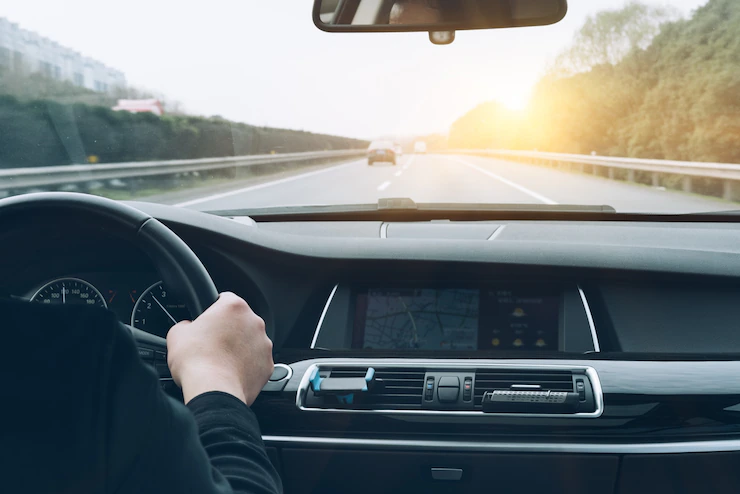Did you know that the average driver in the UK spends around 1000 hours driving each year? Not only does this cost a significant amount in petrol and car maintenance, but it also contributes to pollution and traffic congestion.
One easy step to reducing driving time is consolidating trips whenever possible. Instead of making multiple short trips, combine them into one more extended outing.
Use online resources like maps and delivery services to plan the most efficient way to go about your business. Public transportation, bike-sharing programs, and carpooling are also great options for reducing driving time.
Not only will reducing the amount of time you spend behind the wheel save you money, but it can also positively impact the environment and your community. So next time you run errands or commute to work, consider alternatives to driving alone in your car. Your wallet (and the planet) will thank you.
1. Combine trips to save on petrol

Petrol prices may rise, but there’s a simple way to save cash when filling up your tank: combine trips.
Instead of running multiple errands on separate trips, plan and do them all at once. Not only will this save cash on petrol, but it will also save time and help reduce traffic congestion.
Plus, minimizing car use can have a positive environmental impact as well. So before heading out, take a moment to plan and consolidate your trips whenever possible.
2. Carpool or take public transportation when possible
While it may seem convenient to hop in our own cars, driving alone can hurt our wallets and the environment. By carpooling or taking public transportation, we save money on car wear and tear and parking fees and reduce emissions in the air.
Besides the financial and environmental benefits, carpooling or using public transportation can save us time by alleviating traffic congestion (but only if everyone buys into the idea).
So next time you go out, consider reaching out to a friend for a ride or hopping on the bus instead of automatically grabbing your keys. It will save you cash, lower carbon emissions, and make your commute smoother.
3. Keep your car well-maintained for better fuel efficiency
Practicing good car maintenance not only helps to extend the longevity of your vehicle, but it can also improve its fuel efficiency. Regularly checking and replacing your car’s air filter can vastly improve its performance, as a dirty air filter can restrict airflow and decrease gas mileage.
Ensuring that your tires are properly inflated can also increase fuel efficiency, as underinflated tires create more drag on the road. And remember regular oil changes.
Dirty or old oil can decrease engine efficiency and ultimately hurt gas mileage. If necessary, consider getting a 500 loan to cover the cost of car maintenance – in the long run, it will pay off in the form of improved fuel efficiency and a healthier car.
So pay attention to those routine check-ups if you want your wallet (and the clean air brigade) to thank you.
4. Don’t idle your car unnecessarily

Have you ever been stuck in traffic, idling your car as you wait for the flow of vehicles to move again? It may seem harmless, but idling in your car can negatively affect your wallet and the environment.
Idling consumes fuel without actually moving the vehicle, leading to a decrease in gas mileage and an increase in expenses. Furthermore, idling emits pollutants into the air, contributing to air pollution and potentially harming human health.
So next time you wait in your car for more than a minute or two, turn off the engine and save some money and the environment. Plus, it’s a good driving protocol for learner drivers and their upcoming driving tests.
And if you’re worried about restarting your engine, modern cars can handle frequent starts without any issues.
5. Plant trees and flowers near your home to help reduce carbon emissions
Planting trees and flowers near our homes can significantly impact reducing carbon emissions. Read more from the National Trust here.
Plants absorb carbon dioxide, a significant contributor to harmful greenhouse gas emissions, and release oxygen into the air.
Research has shown that trees can also cool surrounding areas by providing shade and evapotranspiration, helping to reduce energy consumption in and around our homes.
In addition to improving air quality, adding greenery to our landscapes can enhance the overall aesthetic of our neighborhoods and increase property values.
So why not do your part in combating climate change by planting some trees and flowers near your home? It’s a win-win for both the environment and your community.
Driving can be costly in more ways than one. Not only do you have to watch the petrol price constantly increase, but you also have to think about the emissions your car is putting into the environment.
You can do several things to help reduce both of these costs and make driving a bit more environmentally friendly. We’ve shared some top tips on how to save a significant amount of cash on petrol and reduce your carbon footprint while driving; now, it’s up to you to put them into action.
Are there any steps here that you haven’t tried before? If so, what are you waiting for? Get started today and see how much difference even a few small changes can make.
Read Also:



























